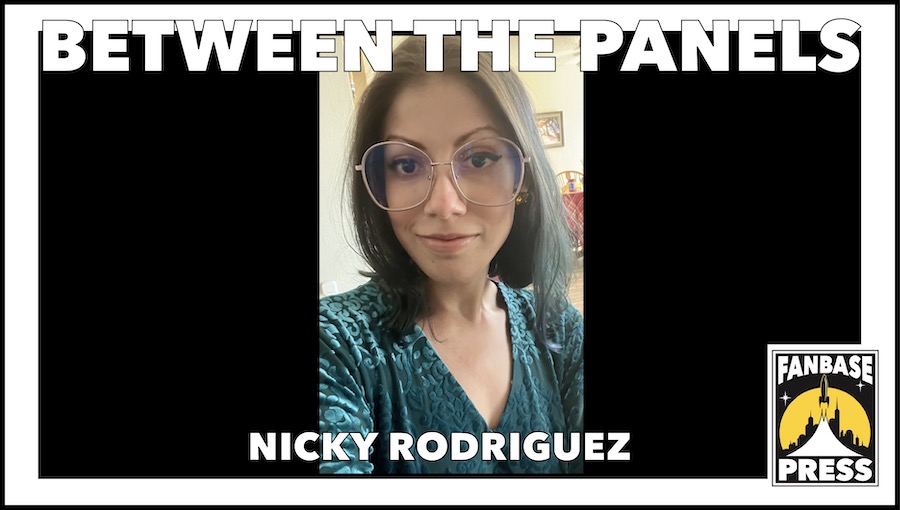“Between the Panels” is a bi-weekly interview series focusing on comic book creators of all experience levels, seeking to examine not just what each individual creates, but how they go about creating it.
Traditional comics. Webcomics. Picture books. Colorist. Creator. Speaker. Instructor. For someone who went to college with an eye toward working in animation, Nicky Rodriguez has put together a wide-ranging resume in the illustration and comics worlds. But as the saying goes, the past is prologue for what exciting, new frontiers await this multi-talented creator.
First off, the basics…
Your specialties (artist/writer/letterer/inker/etc.): Artist, colorist, flatter
Your home base: Denver, CO
Website: artofnickyrodriguez.com
Social Media
Instagram: @artofnickyrodriguez
Bluesky: @artofnickyrdrgz
Other sites where you can be found: GlobalComix / Webtoon
Fanbase Press Contributor Kevin Sharp: We always start with the big question: Why comics? As an artist, what appeals to you about working in this medium?
Nicky Rodriguez: Comics, to me, has always offered the freedom to create whatever story I want. I studied animation for undergrad and really felt stifled by what we were allowed to explore narratively, which ultimately left me feeling pretty lost upon graduation. When I discovered the Bay Area zine community and all that zines and indie comics had to offer, my love for storytelling was reignited.
KS: Let’s start at the beginning with when your interest in making art first developed.
NR: It wasn’t really until middle school that I started to have proper art classes in school. Through that, I took an art class every year up to AP art when I graduated. I hadn’t considered art as a possibility for a career at this point because it had never been presented to me in that way. I just knew that I loved to draw and I really loved anime and manga and would take inspiration from that.
KS: What were the titles that really captured your interest back then?
NR: Inuyasha and Yu-Yu Hakusho were some of the first anime I watched, besides Pokemon. I had a friend who would trade Inuyasha volumes with me every time she finished them; it was great.
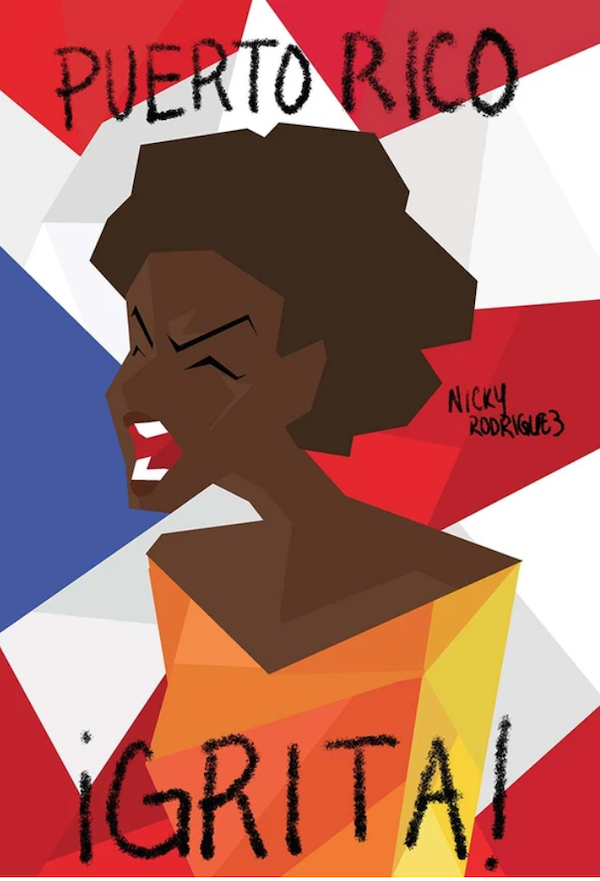
KS: Can you recall an especially “big deal” art project you made in your younger years? Anything that felt like a serious endeavor for you at the time.
NR: I was in fourth or fifth grade and in art class where I think we had to make a comic? Or a few of us just decided to make comics, I’m not sure. I think it was a sci-fi story and several pages long, all stapled together like a floppy. I remember being super stoked to work on it every day after school.
KS: What was the premise?
NR: I’m pretty sure it had to do with an android needing to recover her memories, but that’s all I got! I’m almost positive it ended on a cliffhanger, though I never got back to working on that story.
KS: Would that have been your first attempt at making sequential art?
NR: Yup! I didn’t really experiment much with making comics until that point, and I think I might’ve made one or two short Inuyasha fan comics with a friend after that in junior high.
KS: Talk a bit about your early exposure to comics. How did they first enter your life — newspaper strips, actual “floppies,” or any other way?
NR: I knew about comics peripherally when I was really little because my dad has a big box of old, mostly Marvel, comics that I’d see every time we moved. A lot of my introduction to mainstream comics, though, came later through TV series like Batman Beyond, Justice League, Static Shock, stuff like that. While I started reading manga just before middle school, I didn’t touch mainstream American comics until I was actually in college. It had always seemed like an unwelcome boys’ club and there just didn’t seem to be much appeal to draw me in anyhow. It wasn’t until I went into Dr. Comics and Mr. Games, a comic shop in Oakland, that I really got to explore comics and see just how varied stories can be and how much there was beyond just DC and Marvel cape stories.
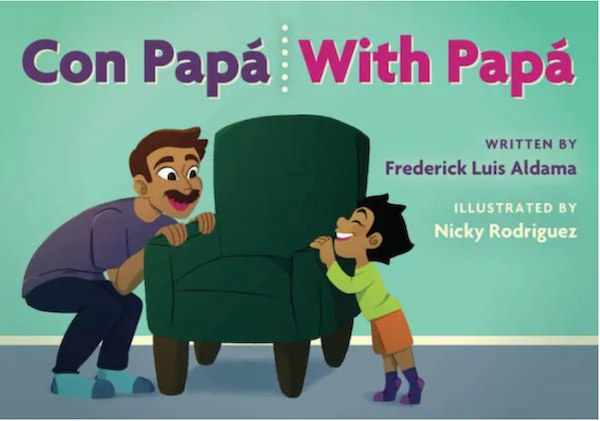
KS: First off, shout-out to Oakland. Second, can you recall any of the titles you found while shopping there that expanded your horizons?
NR: Saga was definitely the title that expanded my horizons. Up until that point, I hadn’t yet seen, let alone read, anything that wasn’t a cape comic. I fell in love with Fiona Staples’ art immediately and the story had me hooked right away. Gotham Academy was another title that really got me wanting to read more comics. I picked up the first trade and really loved the fresh take on an existing chunk of the DC universe.
KS: Were cape comics appealing to you at all, either your dad’s comics or seeing the characters elsewhere outside of the comics pages?
NR: They weren’t really appealing to me until I had started digging through my dad’s collection, and that was mainly just because I was curious what was in there after all these years. I was mostly interested in his DC stuff, even though the collection was mostly Marvel, because I loved the Batman Beyond and Justice League cartoons. Those shows were the only cape media I ever really engaged with and enjoyed, and it at least gave me a starting point for characters to look for in the comics.
KS: At Fanbase Press, our #StoriesMatter initiative endeavors to highlight the impact that stories can have on audiences of various mediums and about the way a reader can find an important story at just the right time. What was a comic book story that had a real impact on you as a reader?
NR: Oof, this is hard! I think I have to go with Goodnight Punpun, though. I read it just after moving to Alaska in junior high. I think a friend might’ve mentioned it to me. It was completely unlike anything I’d ever read before that point; the more detailed, realistic art style, the bleak yet contemplative story, it all hooked me in immediately. I’ve never forgotten that manga. It left such an imprint on me that I think about it to this day and often find myself wondering how I can achieve even a fraction of that level of humanity and existential reflection in my own comics.
KS: Looking back, why was that the right story for you at that time?
NR: I moved a lot as a kid, and the move to Alaska was particularly hard since I’d started to feel pretty settled into junior high by the time we had to pick up and leave. Goodnight Punpun provided a space for rumination through its story that I don’t think I’d ever gotten before through any other manga or cartoons. I was at an age where I was, unknowingly, struggling with finding my sense of self, and Goodnight Punpun somehow provided a comforting in its rawness.
KS: You mentioned your art education in a classroom sense started in middle school. Roughly when did the idea come to you of pursuing that as a possible career?
NR: When my AP art teacher asked me why I wasn’t applying to any art schools my senior year of high school. It truly had not entered my mind as being in the realm of possibility since any career day type-things at school never included the arts and humanities. Right then was when I started researching art schools to get a portfolio made in time for application deadlines.
KS: Was there any Plan B path you were considering during this time?
NR: Not really, I’d originally been planning to pursue the sciences in college, mainly because I was super interested in astrophysics at the time and most of my friends were going to study science. I figured I might end up teaching with that, but that was really about it. Once I decided to pursue art, there was never a backup plan, it just had to happen.
KS: You studied comics and animation in college. Was there family support for that path? Many parents would probably encourage a “regular” major, given what a crapshoot any creative career can be.
NR: Surprisingly, yeah! I think it helped a lot that there was support from my AP art teacher that this was what I should be doing. The plan was to study animation and become either an animator or character designer. My sister had also already gone to school for graphic design before switching to photography, so I think that also helped make it less of a big deal.
KS: Do you remember the first time you ever got paid for a piece of art?
NR: I think it was in 2016? My sculpture for animation teacher let me know that her sister was looking for someone to design characters for some promo materials for her business. She put me in touch with her and I set to work doing character designs. I think that was the first time I’d ever been paid for my artwork and also my first ever art gig.
KS: Moving to comics specifically… Was there a specific mental transition on your part from animation to that, or did your post-college path include a plot twist that led you to comics?
NR: It definitely was a bit of a plot twist. I’d always been fascinated with the storytelling aspect of animation, specifically when it came to character design and visual development. Landing a job in either of those fields was ultimately my goal, but once I realized I wasn’t at a level of skill to even consider applying for jobs, and also didn’t have the money to move to LA on a whim, I had to figure out what to do. I’d already been reading comics more at this point, but hadn’t yet considered it as something to do with my life. I can’t even remember how, but I stumbled upon the fact that CCA had an MFA in Comics program when I decided that getting a second degree might help me get more stable so I could figure things out from there. Reading about the program more in depth helped me see that making comics incorporates everything that I love about visual storytelling, which I knew from reading comics, but since I had already imagined a set path for myself it was really difficult to picture pivoting or taking a detour to get where I wanted to be.
KS: What were some of the specific steps you took as far as getting your work/name out in the world once you decided this was what you wanted to pursue?
NR: As soon as I started making zines, I just applied to every zine fest and indie comic convention I could find. Just before the pandemic hit, there were times where I was flying out almost every other weekend for different events across the country. This also helped me get on panels and do workshops, which is something I really enjoyed as someone who also likes comics pedagogy, and pedagogy in general. If I hadn’t put myself out there and just applied to everything I could realistically afford to get to were I accepted, then I wouldn’t have been able to see just how accessible it was.
KS: It can be difficult to keep putting oneself out there over and over. Were you able to keep the faith during that period that all your time, money, and travel effort were ultimately worth it as far as your career goals?
NR: It was hard, but every festival or convention I did reassured me that it was all worth it and that this is what I’m supposed to be doing. I knew at some point I wanted to [pitch] a graphic novel, but none of that really got started until right when the pandemic began. All I want is to make comics and zines that were for me, and every trip just kept me motivated for the next one. Even though I haven’t been able to travel to these events since the pandemic began, it’s at least allowed me the time, health permitting, to work on my graphic novel pitch with the help of my agent.
KS: What was your first officially published comics work?
NR: It was a zine that collected comic vignettes from my first thesis in the comics program. They were scraggly, little ink illustrations (haha), but I loved the idea of exploring the deconstruction of narrative form through comics, and this collection of vignettes was something I really enjoyed making. I think the zine was 4-6 short abstract comics and illustrations that all fell under the theme of understanding sexuality and attraction. I think all the drawings in it are from 2017, but I didn’t make the zine until 2018.
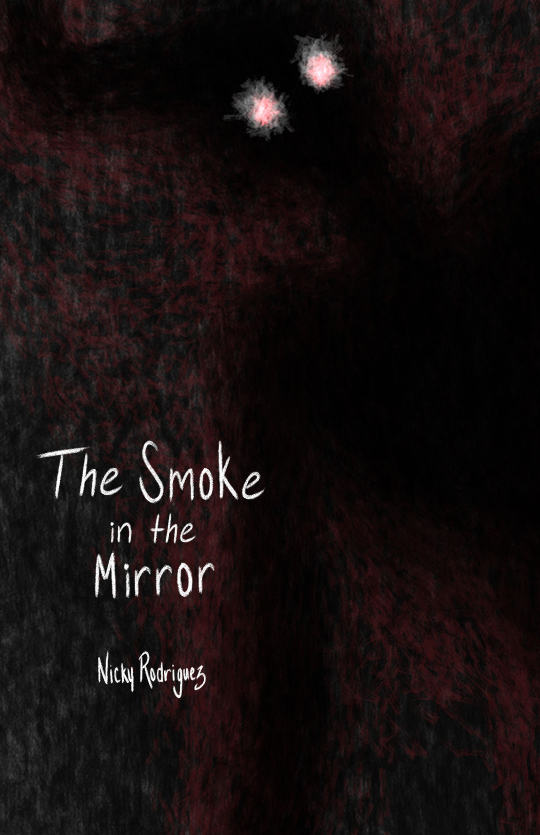
KS: Was there a particular comics job you landed that felt like a “pinch me” moment? I don’t ask that in the sense that the others weren’t important, but rather a point where you couldn’t believe you actually got to be part of [blank]?
NR: I was stoked when I was approached to color one of the variant covers for Jarred Luján & Julio Suarez’s The Twin Blades Blood & Obsidian Kickstarter last year. Everything before that had mostly been my own work or bouncing around flatting for others, so I was excited to have the chance to play around with a cover and to push myself creatively. Until then, I hadn’t even thought I’d have gotten the chance to work on a cover in any capacity.
KS: Your credits include both doing the art as well as colorist/flatter. As a freelancer, how do comic gigs typically find you, or vice versa?
NR: Gigs typically find me most of the time, if not all of the time. I honestly think any job I’ve done that’s included illustration has happened through recommendations and word of mouth of friends, colleagues, and instructors. I definitely don’t sit back and wait for things to fall in my lap, though! Even though the comics industry is this amorphous thing without a handy dandy job board, any time someone puts out a call for an artist is the time to shoot your shot. Even if you don’t get picked, if other folks you know see you “applying,” then they tend to chime in with support and that shows the writer/editor/etc. that “hey, this is probably a great person to work with down the line.” As with anything, the worst thing that’ll happen is you’ll be told no. You’ll never know if you don’t try, and, sometimes, you’re more ready than you realize to be putting yourself out there.
KS: What’s a hobby of yours totally unrelated to art, comics, or anything you do for a living? Can be something you study, collect, practice …
NR: I collect Demon Slayer figures! I always wanted anime figures as a kid and once I got to college and started discovering the comic shops near me, I basically sought it all out. It originally started with just a couple of Neon Genesis Evangelion figures and statutes, some Justice League and Young Justice ones, and then eventually rolled itself into a solid little Demon Slayer collection these last couple of years. Most of my non-anime figures are actually back at my parents’; there’s a few Batmen and a massive Iron Giant in a closet somewhere. Along with the manga box set, I’ve got a replica nichirin blade, 14 or so figures and statues, and some collectible pins. With the series as big as it is, it’s been easy to find small, affordable things outside of specialty stores, so I try to save those fancier collectibles for whenever I wrap on a solid paying gig. The goal is to get at least three more replica nichirin blades!
KS: Imagine a hypothetical Comics Hall of Fame and you get to nominate one title for inclusion that you feel represents the medium at its very best. What’s your pick?
NR: Probably the Kodansha deluxe edition collection of Ghost in the Shell. Shirow Masamune’s artwork is so exquisite and is a testament to the depths of his worldbuilding, as evidenced by his fun, little footnotes beneath panels. Even with the high levels of detail and fast-paced action, there’s never a sense of confusion or lack of clarity. Some panels are chock full of linework, but it never feels busy. Since the manga is also more comedic in tone than the anime and film counterparts, there’s also some great cartooning in there to elicit a chuckle. I like to look back at the pages to study how I can better effectively lead an eye across a page, high action or not, while keeping things fresh and full of visual interest.
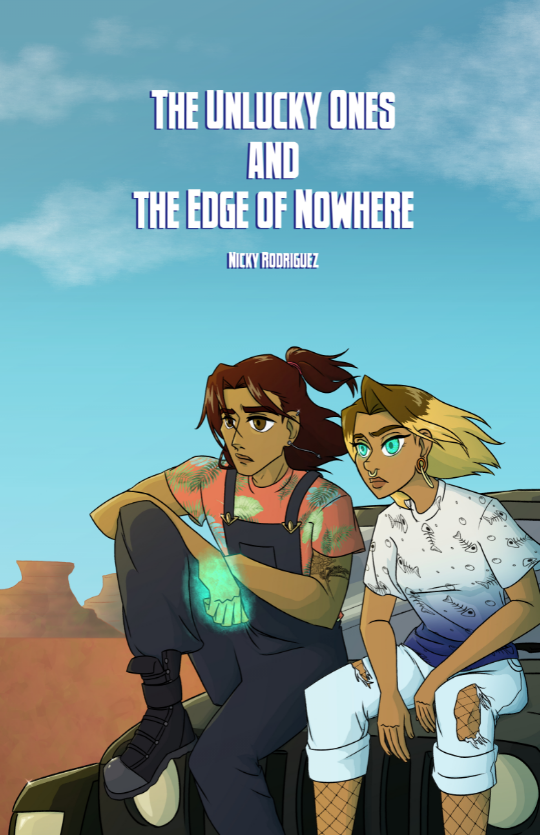
KS: Finally, please let readers know what you have out now and what they should be on the lookout for in ‘23.
NR: Not much on the docket currently outside of my webcomic, The Unlucky Ones and The Edge of Nowhere. I’m planning on getting the pitch for the graphic novel version out to publishers by the end of the summer, so fingers crossed it gets picked up for publication!

